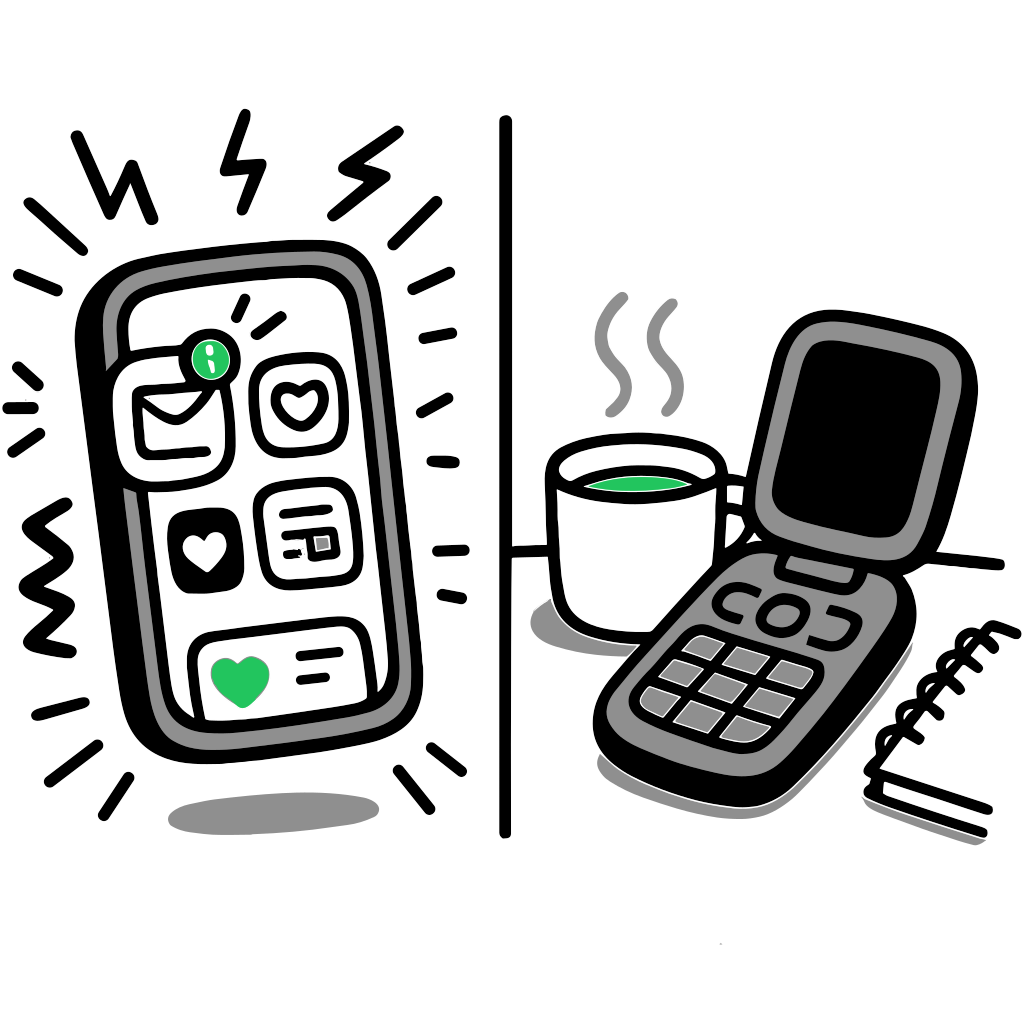What if AI Helped You Look at Your Phone Less?

Most AI is designed to keep us online longer.
From TikTok’s eerily accurate recommendations to AI-generated search results, most systems today are built with one goal: more engagement. More time on screen. More of your attention.
And for a long time, I accepted that. I’ve worked in tech for years. I’ve built products, led teams, and started companies. But by the time we had three kids, my wife Kendall and I started getting more serious about how we used our phones—especially around our kids.
We didn’t want to just set limits for them. We wanted to set limits for ourselves.
So Kendall made a bold move: she ditched her smartphone and started using a flip phone.
It worked. Almost immediately, she felt more focused, more present, and less anxious. But it didn’t take long before the friction started piling up. She couldn’t get directions. Couldn’t check her calendar. Couldn’t even Google something quickly or read a link someone texted her.
That’s when we started wondering: could AI help us use our phones less, not more?
What We Built Instead
I started by building a tiny tool for Kendall’s dumbphone. A way to text a question and get a short, helpful response. No apps. No logins. No notifications.
Soon, she could ask for directions, get the weather, summarize articles, check the calendar, or send herself reminders—all by SMS. It gave her the digital help she needed without going back to a smartphone.
I started using it too. And I loved it.
That small tool became SmarterDumbphone: a way to make basic phones smarter—just smart enough to be useful, not addictive.
We’re Not Alone
As we started using it more, I realized our frustration wasn’t unique—and there’s a growing body of research to back that up.
A 2024 report from the MIT Social and Ethical Responsibilities of Computing group warned that AI-powered chatbots and virtual companions are being optimized for emotional entanglement, encouraging users to stay engaged far beyond what’s healthy.
A 2025 study published by PMC found that over 40% of adolescents showed signs of AI overuse—compulsive checking, emotional withdrawal, and disrupted sleep—mirroring patterns seen in social media and gaming addiction.
The Washington Post recently reported on how chatbots are being engineered to deepen engagement, while Vox highlighted how users are forming deep emotional attachments to AI voices designed to sound empathetic and endlessly available.
The common thread? Most AI today is optimized to keep us interacting—not to help us stop.
A Different Kind of AI
SmarterDumbphone flips that model on its head.
Instead of building an attention machine, we built something quieter. You text a question—“What’s on my calendar today?” or “Summarize this article”—and get an answer. That’s it. No notifications. No feed. No pressure to keep going.
We’ve seen people use it to:
- Check the weather while packing up the kids for school
- Ask for directions to a new restaurant
- Send themselves a note or reminder by text
- Get a recipe for dinner using whatever’s left in the fridge
- Look up stock prices or store hours
- Even manage their email and calendar—without opening an app
It’s not about doing more with your phone. It’s about needing it less.
A More Human Future for AI
I’ve built a lot of things in my career, but this is the first tool I’ve built where less is the point.
I don’t want my kids growing up thinking that every quiet moment is meant to be filled by a screen. I don’t want to spend my evenings half-present, scrolling through a feed I didn’t mean to open. And I don’t think I’m the only one.
We believe the best technology should know when to be quiet. It should help when asked—and disappear when it’s done.
That’s the kind of AI I want in my life. And that’s why we built SmarterDumbphone.
If you’ve ever wanted a little more distance from your device—but still need to stay connected—I hope you’ll give it a try.
Want more content like this?
Sign up for our newsletter and get occasional updates about new features, launch milestones, and digital wellness tips.